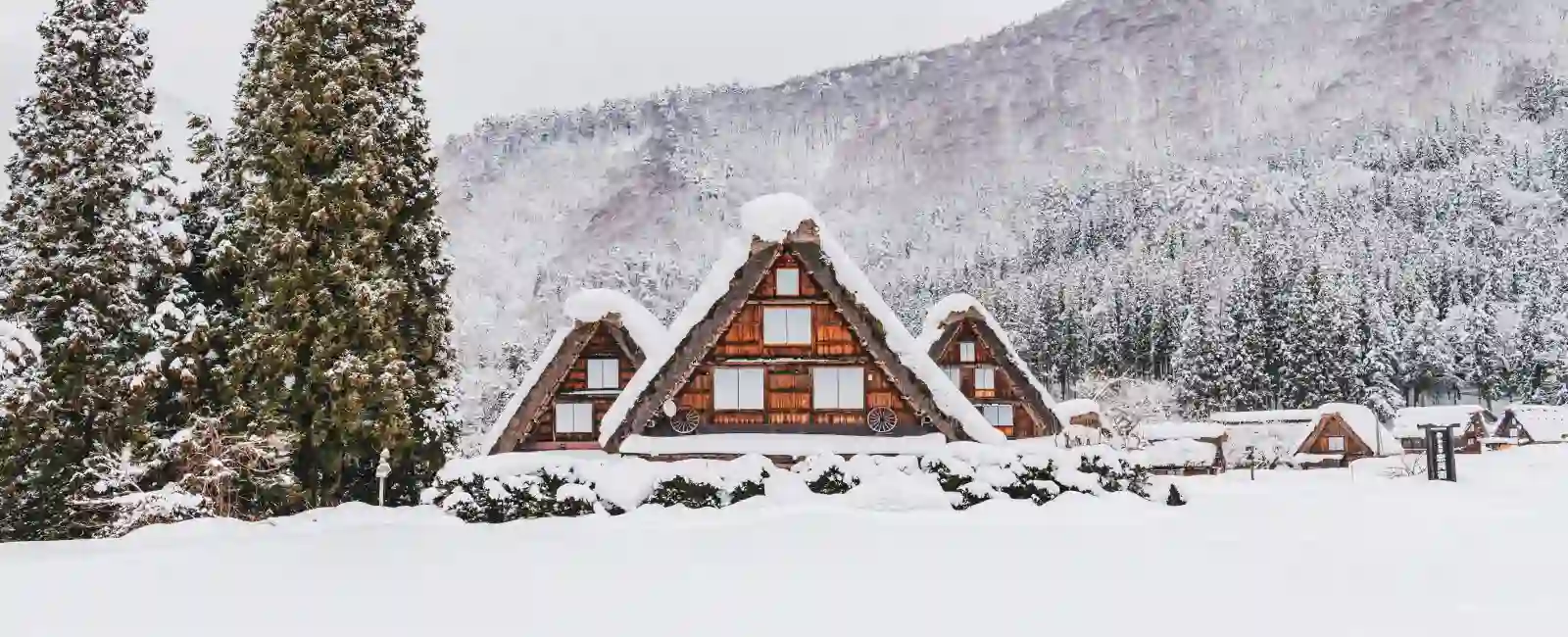Japan’s bustling cities often overshadow its serene rural landscapes, yet a journey into the countryside reveals a side of the country rich in tradition, natural beauty, and authentic cultural experiences. Rural life tours in Japan offer an immersive escape from urban life, allowing travelers to experience the heart of Japanese culture through picturesque villages, centuries-old farming practices, and the warm hospitality of locals. Whether you seek relaxation, adventure, or a deeper understanding of Japan’s heritage, rural life tours present a perfect blend of all these elements. This article provides a detailed guide on how to organize your trip, tips for a seamless experience, price ranges, and a breakdown of what to see and do in Japan’s rural regions.
Organizing Your Tour
Organizing a rural life tour in Japan requires thoughtful planning to maximize the experience. Begin by selecting the region you wish to explore. Japan’s countryside offers diverse landscapes and cultural experiences, so your choice will depend on your interests. Some popular regions for rural life tours include the Kiso Valley in Nagano Prefecture, the Noto Peninsula in Ishikawa Prefecture, and the rural villages of Gifu Prefecture.
Once you’ve selected your destination, decide on the duration of your stay. A typical rural life tour lasts between three to seven days, depending on how deep an experience you desire. Booking accommodations in advance is crucial, especially in smaller villages where options may be limited. Consider staying in traditional ryokan inns or minshuku (family-run guesthouses) to fully immerse yourself in the local lifestyle.
Transportation is another key aspect of your planning. While Japan’s train system is highly efficient, rural areas often require travel by bus or car. Renting a car offers the flexibility to explore remote areas at your own pace, but if you prefer public transportation, check bus schedules in advance as services can be infrequent.
To ensure a smooth experience, consider hiring a local guide. Guides can provide valuable insights into the region’s history, culture, and customs, enriching your tour significantly. Additionally, they can help bridge language barriers, making interactions with locals more meaningful.
Tips for an Unforgettable Rural Life Tour in Japan
To make the most of your rural life tour in Japan, follow these tips:
- Learn Basic Japanese Phrases: While many Japanese people in rural areas may not speak English, they are often patient and appreciative of any effort to communicate in their language. Learning basic phrases such as greetings and expressions of gratitude will enhance your interactions and show respect for the local culture.
- Pack Appropriately: The rural areas of Japan experience varying weather conditions depending on the season. Pack comfortable clothing suitable for outdoor activities, as well as layers to adjust to changing temperatures. Don’t forget to bring sturdy footwear for walking or hiking.
- Respect Local Customs: Japan’s rural communities hold strong to traditions and customs. Be mindful of practices such as removing shoes before entering homes, being quiet in public spaces, and participating in local rituals if invited. Showing respect for these customs will enrich your experience and endear you to the local residents.
- Embrace Slow Travel: Rural life in Japan moves at a different pace compared to the cities. Allow yourself to slow down and fully absorb the tranquility of the countryside. Take time to observe daily life, engage with locals, and appreciate the natural surroundings.
- Try Local Cuisine: One of the highlights of rural life tours in Japan is the opportunity to enjoy regional cuisine made with fresh, locally sourced ingredients. Be open to trying dishes unique to the area, such as sansai (wild mountain vegetables) and local specialties like soba noodles or fresh seafood.
Price Ranges
The overall expense will also depend on the region you choose, as some rural areas are more remote and may require additional travel costs. Additionally, seasonal factors can influence prices, with peak tourist seasons often leading to higher rates for accommodations and guided tours. Finally, the level of luxury or comfort you desire will further impact the total cost, as opting for premium services or exclusive experiences can substantially increase your budget.
- Accommodations: Staying in a traditional ryokan or minshuku can range from ¥10,000 to ¥25,000 per night per person, including meals. More luxurious options, such as a ryokan with onsen (hot spring) facilities, may cost between ¥30,000 and ¥50,000 per night. For budget travelers, hostels or camping options are available in some areas for around ¥3,000 to ¥8,000 per night.
- Transportation: Renting a car costs approximately ¥6,000 to ¥10,000 per day, excluding fuel. Public transportation, such as buses and trains, typically costs between ¥1,000 and ¥3,000 per journey, depending on the distance. In rural areas, taxis are available but can be expensive, so plan accordingly.
- Guides and Tours: Hiring a local guide for a day can range from ¥15,000 to ¥30,000, depending on the region and expertise. Some organized tours include transportation and meals, with prices ranging from ¥10,000 to ¥20,000 per person per day.
- Meals: Meals at local restaurants or inns generally cost between ¥1,500 and ¥5,000 per person. Sampling local specialties or dining at a high-end ryokan may push the cost higher.
What to See and Do on Rural Life Tours in Japan
Rural life tours in Japan offer a wide array of activities and sights that vary by region. From exploring ancient temples nestled in serene mountain valleys to partaking in local crafts like pottery and indigo dyeing, these experiences provide a deep dive into the cultural heritage of each area. Additionally, savoring regional cuisines, often prepared with ingredients sourced directly from local farms, adds a flavorful dimension to your journey. Beyond the culinary delights, you can immerse yourself in seasonal festivals that celebrate the local community’s traditions, offering a vibrant glimpse into their way of life. Find more about festivals in this article.
Furthermore, taking a leisurely stroll through terraced rice fields or cycling along scenic rural routes allows you to connect with nature and enjoy the picturesque landscapes at your own pace.
Whether you’re interested in history, art, or simply unwinding in a tranquil environment, rural life tours in Japan cater to a diverse range of interests, ensuring a fulfilling and memorable experience. Here are some highlights you should consider including in your itinerary:

1. Explore Historic Villages
Japan’s rural areas are dotted with historic villages that offer a glimpse into the country’s past. Visit Shirakawa-go in Gifu Prefecture, a UNESCO World Heritage site known for its gassho-zukuri farmhouses, characterized by steep thatched roofs designed to withstand heavy snowfall. The village’s preserved architecture and tranquil setting make it a must-see on any rural life tour.
In Nagano Prefecture, the Kiso Valley features the Nakasendo trail, an ancient route that connected Kyoto and Edo (Tokyo). Walking the Nakasendo allows you to explore charming post towns like Tsumago and Magome, where traditional wooden buildings line the cobblestone streets.
2. Participate in Traditional Farming Activities
Many rural life tours include the opportunity to experience traditional Japanese farming practices. In the Tohoku region, for example, you can join local farmers in planting or harvesting rice, learning firsthand about the cultivation methods passed down through generations. This immersive experience not only provides insight into the hard work that sustains rural communities but also allows you to connect with the land and its people.
Additionally, visit farms that specialize in other crops, such as tea plantations in Shizuoka or wasabi farms in Nagano. Engaging in these activities offers a deeper understanding of Japan’s agricultural heritage.
3. Enjoy Outdoor Activities
Japan’s countryside is a playground for outdoor enthusiasts. Depending on the season, you can enjoy hiking, cycling, or even skiing in some regions. The Japanese Alps, for instance, offer breathtaking hiking trails that wind through mountains, forests, and valleys. One popular route is the Kamikochi trail in Nagano Prefecture, which leads to stunning views of Mt. Hotaka and the Azusa River.
In the warmer months, explore the coastal areas of the Noto Peninsula, where you can cycle along scenic routes, kayak in crystal-clear waters, or relax on quiet beaches. These activities allow you to appreciate the natural beauty of Japan’s rural landscapes.
4. Experience Local Festivals
Rural Japan is home to many traditional festivals, which provide a unique window into the local culture. Plan your visit to coincide with a festival, such as the Takayama Spring Festival in Gifu Prefecture, known for its elaborate floats and vibrant street processions. Another noteworthy event is the Owara Kaze no Bon in Toyama Prefecture, where dancers in traditional costumes perform graceful routines to the sound of folk music.
These festivals are not only visually stunning but also offer opportunities to engage with locals and participate in age-old traditions. Attending a festival can be one of the most memorable aspects of your rural life tour in Japan.
5. Stay in a Traditional Ryokan or Minshuku
Accommodations play a significant role in the rural life experience. Staying in a traditional ryokan or minshuku allows you to experience Japanese hospitality at its finest. Many ryokans offer onsen baths, where you can unwind after a day of exploration, while minshukus provide a more intimate setting with home-cooked meals and personal interactions with the hosts.
In the morning, enjoy a traditional Japanese breakfast, often featuring rice, miso soup, grilled fish, and pickled vegetables. These accommodations immerse you in the daily rhythms of rural life, enhancing your connection to the local culture.
6. Visit Artisanal Workshops
Rural Japan is home to a wealth of artisanal traditions, many of which have been preserved for centuries. In regions like Kanazawa or Okayama, visit workshops where you can see artisans at work, creating everything from pottery and lacquerware to textiles and paper. Some workshops offer hands-on experiences, allowing you to try your hand at crafting a piece of Japanese art.
These visits provide insight into the meticulous craftsmanship that characterizes Japanese arts and crafts. Purchasing a locally made item as a souvenir also supports the continuation of these traditional practices.
How to Plan Your Tour
Planning your rural life tour in Japan involves several key steps to ensure a fulfilling and smooth experience:
- Choose Your Region: Decide on the region that aligns with your interests, whether it’s the historic villages of Gifu, the rugged coastlines of Ishikawa, or the agricultural landscapes of Nagano. Each region offers its own unique set of experiences and attractions.
- Set Your Budget: Determine how much you’re willing to spend on accommodations, transportation, and activities. This will help you make informed choices when booking and planning your itinerary.
- Book Accommodations Early: Rural areas may have limited lodging options, so it’s essential to book early, especially during peak seasons or festivals. Consider staying in a ryokan or minshuku for an authentic experience.
- Plan Your Activities: Research the activities and attractions available in the region and prioritize those that interest you most. Whether it’s hiking, farming, or attending a festival, make sure to allocate enough time for each.
- Prepare for Transportation: If you plan to rent a car, make sure to obtain an international driving permit before your trip. For those relying on public transportation, check bus and train schedules in advance and plan your routes accordingly.
- Pack Accordingly: Depending on the season and planned activities, pack suitable clothing and gear. Remember to bring comfortable shoes, a camera, and any personal items you may need.
- Learn About Local Customs: Familiarize yourself with the customs and etiquette of the region you’re visiting. This will help you navigate social interactions and show respect to your hosts.
Conclusion
Rural life tours in Japan offer a unique and enriching way to experience the country’s deep-rooted traditions, breathtaking landscapes, and warm hospitality. By carefully planning your trip, respecting local customs, and embracing the slower pace of rural life, you’ll gain a deeper appreciation for the beauty and cultural richness of Japan’s countryside. Whether you’re exploring historic villages, participating in farming activities, or simply enjoying the tranquility of nature, a rural life tour will undoubtedly leave you with lasting memories and a profound connection to the land and its people. So, embark on this journey into Japan’s heartland and discover the magic of rural life tours.



